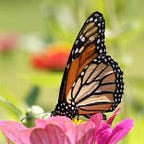Cat Darst and Species Recovery
Cat Darst cares about species recovery, improving decision making, and conservation policy. She is the Assistant Field Supervisor for Listing and Recovery at the Ventura Fish and Wildlife Office in California. Cat is a California-native, growing up in the Monterey-area. She has always loved critters and being in nature, but it was during her doctorate research that she became interested in conservation. Cat has a B.S. in Evolution and Ecology and B.A. in English from University of California Davis and a Ph.D. in Evolution, Ecology, and Behavior at University of Texas Austin.
As the Assistant Field Supervisor for Listing and Recovery, the Endangered Species Act (ESA) is a critical component of her work. This environmental law prohibits the import, export, or taking (which means to fish, pursue, hunt, shoot, trap, net, capture, collect, kill, harm, or attempt to engage in any such conduct) of fish and wildlife and plants that are listed as threatened or endangered species. The ESA also provides for preparing and implementing plans for their recovery and for adding or removing species from the list.
Cat prioritizes at-risk species conservation and supports the development of Species Status Assessments (SSAs). SSAs are a systematic analysis of the current and future responses of a species to stressors and conservation efforts. SSAs provide the scientific foundation for ESA decision-making. She has been involved in numerous initiatives to improve how the ESA is implemented, including the development of SSA process. Cat also works on 5-year reviews, a periodic analysis of a species’ status conducted to ensure that the listing classification of a species as threatened or endangered on the List of Endangered and Threatened Wildlife and Plants is accurate.
Cat’s job also includes developing Recovery Plans, running Recovery Teams and expert workshops, and facilitating recovery implementation.
Cat facilitated the development of the Recovery Plan for the Santa Barbara California Tiger Salamander, the Candidate Conservation Agreement for San Fernando Valley spineflower, SSAs for many species including the tidewater goby, and the delisting of the island fox and San Benito evening primrose. She spent time with the USFWS’ Desert Tortoise Recovery Office developing and implementing a recovery plan for this keystone species.
“My favorite part of working for the U.S. Fish & Wildlife Service is the application of the best available science to Endangered Species Act decisions,” Cat explains. She believes that, “this is when the Service is at our best, doing the incredibly important, science-based work of preventing extinction and promoting recovery.”
Adaptive potential is the capacity for species to evolve creative and clever traits as their surrounding environment changes. It is defined as the ability of species or populations to respond to selection by means of phenotypic or molecular changes. Considering this adaptive capacity of species improves the effectiveness of conservation practices. Most recently, Cat has been exploring the relationship between adaptive capacity and extinction risk. “The methods in this part of Species Status Assessment framework are open-ended,” so she has collaborated with USGS and partners in academia to compile information and resources for this research. Check out her latest publication titled, “Linking evolutionary potential to extinction risk: applications and future directions,” published in the Journal of Frontiers in Ecology and the Environment.
Another of Cat’s recently published articles “had the goal to chart a path forward for integrating genomics into ESA decision making to facilitate full consideration of adaptive potential (which happens when there is rapid environmental change) in evaluating long-term risk of extinction.” For more check out her full text article, “Improving conservation policy with genomics: a guide to integrating adaptive potential into U.S. Endangered Species Act decisions for conservation practitioners and geneticists.”
To learn more about Dr. Cat Darst’s research, check out her recently published “Linking evolutionary potential to extinction risk: applications and future directions,” published in the Journal of Frontiers in Ecology and the Environment, discoverable via USFWS Conservation Library. #FWSscholar is brought to you by the USFWS Library, #WeAreUSFWS.
